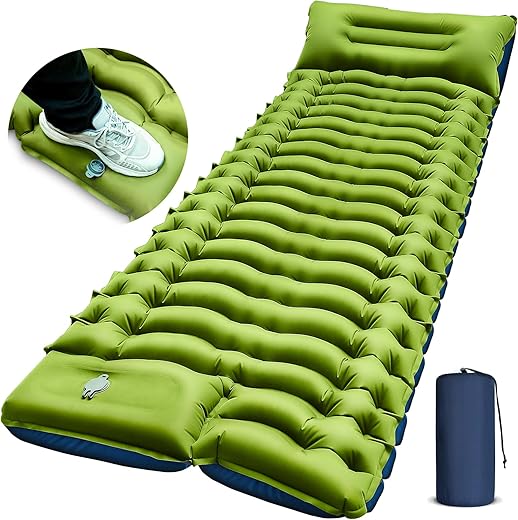
When it comes to a good night’s sleep outdoors, the choice of sleeping pad can make all the difference. As adventurers, we understand the importance of comfort and rest, especially after a long day of hiking or exploring. However, with prices ranging from wallet-friendly to premium, many of us find ourselves questioning whether those pricey compact sleeping pads truly offer benefits that justify the investment. In this blog post, we will delve into the nuances of sleeping pad pricing, examining the features, durability, and comfort levels that vary between budget and high-end options. Our goal is to provide you with the knowledge you need to make the best choice for your camping or backpacking needs, ensuring you can rest easy no matter your budget.



Understanding Compact Sleeping Pads
Compact sleeping pads are essential gear for campers and backpackers looking for lightweight, portable, and comfortable sleeping solutions. They provide a layer of cushioning and insulation from the cold ground, which can significantly enhance overnight comfort during outdoor adventures. Understanding the various features, types, and benefits of these pads can help you make an informed choice tailored to your specific needs.
What are Compact Sleeping Pads?
Compact sleeping pads are inflatable or foam pads designed for easy transport and minimal storage space. These pads typically roll up or fold into a small package, making them ideal for travel in conditions where space and weight are constraints.
- Purpose: The primary function of a compact sleeping pad is to provide cushioning and insulation while sleeping. They help minimize heat loss and improve sleep quality by softening the surface beneath you.
- Portability: Lightweight and easily packable, these pads cater specifically to hikers and campers who prioritize convenience without compromising comfort.
Types of Compact Sleeping Pads
There are several categories of compact sleeping pads, each with unique advantages:
- Inflatable Sleeping Pads:
- Advantages: Offer excellent cushioning and warmth, ideal for a luxurious night’s sleep.
- Example: The Therm-a-Rest NeoAir XLite is known for its incredible warmth-to-weight ratio and packs down to the size of a water bottle. Weighing just 12 ounces, it’s a favorite among ultralight backpackers.
- Self-Inflating Pads:
- Advantages: Merge aspects of both inflatable and foam pads, providing some cushioning due to their foam core while self-inflating for convenience.
- Example: The REI Co-op Flexlite self-inflating pad is popular for its solid insulation value and offers good back support, making it a versatile option for varied camping conditions.
- Foam Pads:
- Advantages: Extremely lightweight and durable, while not as comfortable as inflatable options, they offer reliable insulation and resilience against punctures.
- Example: The Therm-a-Rest Z Lite Sol is a prime example. This closed-cell foam pad weighs just 14 ounces and features an accordion design that makes it easy to store and transport while ensuring sufficient insulation for warm and cold nights alike.
Key Materials Used in Compact Sleeping Pads
The materials used in the construction of sleeping pads play a significant role in their functionality:
- Nylon and Polyester: Common in inflatable pads as they are lightweight and durable, resisting tearing and abrasion.
- Closed-cell Foam: Found in foam pads, it provides substantial insulation and doesn’t require inflation.
- Open-cell Foam: Used in self-inflating pads, offering a comfort layer while promoting insulation.
Types of Insulation
The insulation type affects the performance of sleeping pads in cold weather conditions:
- Air Insulation: Found in inflatable and modular pads, where layers of air provide insulation. Many models, such as the Sea to Summit Ether Light XT and its thermal efficiency, are excellent examples.
- Synthetic Insulation: Typically used in self-inflating pads, synthetic materials retain shape and provide reliable insulation even when wet, making the Big Agnes Q-core SL a suitable option for varied climates.
- Down Insulation: While rare in pads, it can be found in high-end options, offering superior warmth at minimal weight.
Features Enhancing Functionality and Portability
When choosing a compact sleeping pad, consider the following key features that improve functionality and portability:
- Weight: Many premium models weigh between 1-2 lbs, striking a balance between comfort and carrying ease.
- Pack Size: Look for pads that compress small for easy storage in backpacks. Pads like the Klymit Static V Lite pack down to about the size of a water bottle.
- R-Value: A critical measure of a sleeping pad’s thermal resistance; an R-value of 3 or more is generally recommended for winter camping. For instance, the Nemo Tensor Insulated pad has an R-value of 4.2, making it suitable for cold-weather outings.
Popular Brands and Models
Here’s a comparison of some popular compact sleeping pads:
| Brand & Model | Type | Weight (lbs) | R-Value | Packed Size |
|---|---|---|---|---|
| Therm-a-Rest NeoAir XLite | Inflatable | 0.12 | 3.2 | 9 x 4 inches |
| REI Co-op Flexlite | Self-Inflating | 2.5 | 3.9 | 20 x 7 inches |
| Therm-a-Rest Z Lite Sol | Foam | 0.875 | 2.0 | 20 x 5 inches |
| Sea to Summit Ether Light XT | Inflatable | 1.5 | 4.2 | 10 x 5 inches |
| Nemo Tensor Insulated | Inflatable | 1.5 | 4.2 | 10 x 5 inches |
| Klymit Static V Lite | Inflatable | 1.0 | 1.9 | 5 x 6 inches |
By understanding compact sleeping pads and their features, you can confidently select the best option to enhance your outdoor sleeping experience. Whether aiming for lightweight aesthetics in inflatable designs or sticking with the robust reliability of foam pads, there’s a suitable choice to fit every style of camping and backpacking expedition.
The Price Spectrum: Budget vs. Premium
When it comes to choosing a compact sleeping pad, price is often a determining factor. However, it’s crucial to do more than just glance at the price tag. The features, performance, and longevity of a sleeping pad can vary significantly between budget-friendly options and premium models. This section delves into these differences, providing insights to help you make an informed choice.
Understanding Budget-Friendly Options
Budget sleeping pads, typically ranging from $30 to $80, offer essential features suitable for casual campers and short trips. These pads are budget-conscious yet functional, often appealing to beginners or those embarking on less intensive outdoor adventures.
Features of Budget Sleeping Pads
- Weight and Packability: While many budget options are relatively lightweight, they may not be as compact as premium models. For instance, the Klymit Static V Lite weighs 18 ounces but doesn’t pack down quite as small as some higher-end alternatives.
- Durability: Economical pads may utilize thinner materials that could impact durability. Models like the Therm-a-Rest Z Lite Sol are known for their closed-cell foam construction, offering decent durability but at the cost of comfort on uneven surfaces.
- Comfort Level: Although budget pads functionally provide insulation from the ground, they may lack the advanced insulation technology and overall comfort found in pricier models. For example, the REI Co-op Trailbreaker sleeping pad offers adequate comfort but might not perform well in colder conditions compared to premium options.
- R-Value: Most budget sleeping pads usually have lower R-values, which measure thermal resistance. This means they’re less effective at insulation. A typical budget sleeping pad, like the ENO WT Lights with an R-value lower than 2, is not ideal for cooler weather.
Five Solid Budget Options to Consider:
- Klymit Static V Lite:
- Price: $65
- Weight: 18 oz
- Dimensions: 72 x 23 x 2.5 in
- REI Co-op Trailbreaker:
- Price: $69
- Weight: 18 oz
- R-Value: 3.2
- Therm-a-Rest Z Lite Sol:
- Price: $49
- Weight: 14 oz
- R-Value: 2.0
- ENO WT Lights:
- Price: $59
- Weight: 1 lb 7 oz (with straps)
- Packability: Slightly larger due to foam structure
- Sea to Summit Ultralight Air:
- Price: $79
- Weight: 14 oz
- R-Value: 2.5
Premium Sleeping Pads: An Investment in Quality
On the opposite end of the spectrum, premium sleeping pads typically range from $100 to $400+. Unlike budget models, these come packed with innovative features aimed at maximizing comfort, portability, and durability, making them suitable for long-term campers or backcountry enthusiasts.
Features of Premium Sleeping Pads
- Weight and Packability: Premium models, such as the Sea to Summit Comfort Plus Insulated, feature advanced materials that result in a lighter weight without sacrificing thermal efficiency. This model weighs only 1 lb 9 oz while offering superior comfort.
- Durability: Premium pads often utilize high-denier fabrics and stronger seams, making them more resistant to punctures and wear. Brands like Big Agnes offer models like the Big Agnes Q-Core SLX that boast rugged materials designed for frequent use.
- Comfort Level: Ultra-comfort is one of the distinguishing factors of premium sleeping pads. The Exped MegaMat series integrates an integrated pump and is 3.5 inches thick, providing exceptional cushioning and support for side sleepers.
- R-Value: Premium options usually have higher R-values, making them suitable for varied temperatures. For example, the NEMO Tensor Insulated boasts an R-value of 3.5, perfect for four-season use.
Five Premium Models to Consider:
- Sea to Summit Comfort Plus Insulated:
- Price: $279
- Weight: 1 lb 9 oz
- R-Value: 4.0
- Big Agnes Q-Core SLX:
- Price: $179
- Weight: 1 lb 15 oz
- Dimensions: 78 x 20 x 3.5 in
- Exped MegaMat:
- Price: $250
- Weight: 2 lbs 12 oz
- R-Value: 8.1
- NEMO Tensor Insulated:
- Price: $189
- Weight: 1 lb 3 oz
- R-Value: 3.5
- Therm-a-Rest NeoAir XTherm:
- Price: $349
- Weight: 1 lb
- R-Value: 6.9
Balancing Costs with Features
As you weigh your options, it’s essential to consider how often you’ll use the sleeping pad and in what conditions. Here’s a practical comparison of key factors based on price:
| Feature | Budget Options | Premium Options |
|---|---|---|
| Weight & Packability | Heavier; less compact | Lighter; highly packable |
| Durability | Average; thinner materials | High; robust fabric choices |
| Comfort | Basic cushioning | Enhanced support; ergonomic design |
| R-Value | Generally lower | Higher; better thermal performance |
| Price Range | $30 – $80 | $100 – $400+ |
What to Consider When Choosing
- Frequency of Use: If you’re a frequent camper, the investment in a premium pad can be beneficial in terms of comfort and durability.
- Type of Activities: For casual trips, budget options may suffice. For serious backcountry explorations, premium pads are ideal.
- Weight Sensitivity: For those hiking longer distances, prioritizing weight and packability in premium options will enhance your experience.
In the exploration of compact sleeping pads, understanding the features associated with budget and premium categories is crucial for matching your outdoor lifestyle and financial considerations. By evaluating the specific needs of your adventures, you can better select the sleeping pad that suits your needs perfectly.
Factors to Consider Before Purchasing
When it comes to choosing the right sleeping pad for your camping or backpacking adventures, there are several crucial factors that can greatly influence your decision. Here, we’ll explore these factors, breaking down each one so you can make an informed purchase. From weight considerations to insulation types, we’ll cover essential details that match your individual needs.
Weight
The weight of a sleeping pad is a primary concern for many outdoor enthusiasts, especially those who carry their gear over long distances. Lightweight pads can significantly reduce the overall pack weight.
- Ultralight Options: Brands like Sea to Summit and Therm-a-Rest offer ultra-light options, weighing as little as 1 pound (450 grams) without sacrificing comfort.
- Heavier Pads: On the other hand, if comfort is your priority and weight isn’t as much of a concern (like when car camping), consider more robust models like the NEMO Roamer, which can weigh over 2 pounds (900 grams) but provide a plush sleeping experience.
Insulation Type
The type of insulation in a sleeping pad directly affects temperature regulation and comfort.
- Air Pads: Most modern air pads, like the Therm-a-Rest NeoAir XLite, utilize inflatable technology, allowing for easy packability and excellent thermal efficiency.
- Self-Inflating Pads: Options such as the REI Co-op Camp Dreamer draw air into their foam when unrolled, combining comfort and ease but may be bulkier.
- Closed-Cell Foam Pads: Brands like Z Lite Sol are lightweight and durable, providing decent insulation for basic camping but can be less comfortable for side sleepers.
R-Value (Thermal Resistance)
Understanding R-value is paramount since it measures a sleeping pad’s insulation performance. A higher R-value means better insulation.
- Low R-Value (1-2): Ideal for summer or warm weather trips; options include the Klymit Inertia X Wave.
- Moderate R-Value (2-4): Suitable for shoulder seasons; consider the Big Agnes Q-Core SLX.
- High R-Value (4+): Best for winter camping; a popular choice is the Nemo Tensor Insulated, keeping you warm even in freezing conditions.
| R-Value | Recommended Use | Example Product |
|---|---|---|
| 1-2 | Summer Camping | Klymit Inertia X Wave |
| 2-4 | Shoulder Seasons | Big Agnes Q-Core SLX |
| 4+ | Winter Camping | Nemo Tensor Insulated |
Ease of Setup
The setup process can significantly impact your camping experience. Quick and easy inflation systems are worth considering:
- Inflation Time: Pads like the REI Co-op Flash can inflate with just a few breaths, while other models may require multiple minutes of effort.
- Integrated Pumps: Some models, such as the Exped MegaMat, come with built-in pumps that facilitate fast setup.
User Reviews
One of the most trustworthy ways to gauge a product’s performance is through user reviews. When considering sleeping pads, look at ratings on websites like REI and Amazon:
- Positive Feedback: If many users rave about the NEMO Tensor for its comfort during long hikes, it’s likely worth considering.
- Negative Reviews: Pay attention to any recurring issues, such as leakage with models like the Sierra Designs Air Bed, which can impact your overall satisfaction.
Real-World Testing
Finally, hands-on experience is essential. If feasible, visit a local outdoor retailer, and test out various sleeping pads to explore which ones feel most comfortable for you.
- Try Them Out: Lie down on a few pads in-store to assess comfort levels.
- Real Scenarios: Consider taking your chosen sleeping pad for a weekend camping trip before embarking on a longer journey. This real-world testing will provide insight into how it performs under actual circumstances, allowing you to gauge comfort and suitability fully.
In summary, choosing the right sleeping pad involves careful consideration of weight, insulation type, R-value, ease of setup, and firsthand experience. By thoroughly evaluating these factors, you can make a better decision that caters to your personal preferences and outdoor lifestyle.
Weighing Quality Against Cost: Final Thoughts on Your Investment
In conclusion, investing in an expensive compact sleeping pad can significantly enhance your comfort and overall camping experience. While they may require a larger initial financial outlay, the benefits of quality, durability, and improved performance often justify the expense, especially for avid outdoor enthusiasts. Ultimately, the decision hinges on your individual needs, usage frequency, and budget constraints. Thoughtful consideration of these factors will help you determine if such an investment is right for you.



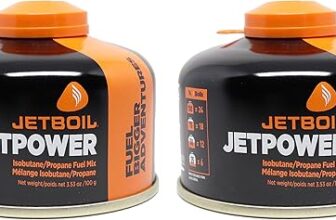
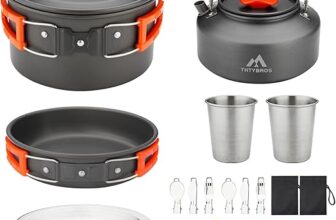
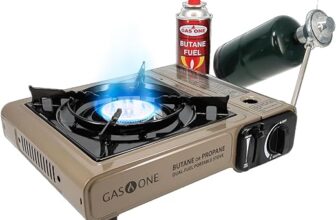
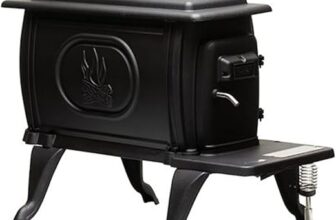


Thanks for sharing your experience! The NeoAir Xlite is definitely a popular choice among campers for its balance of weight and comfort. Have you found it to be durable over time?
I get the appeal of the pricey pads, but I’ve had some bad experiences with them. My Big Agnes Q-Core SL got a leak after just a few uses. Sometimes budget options like the REI Co-op Flash are just as good without breaking the bank!
That’s a fair point! Leaks can be a real pain, and it’s good to know that there are budget options that perform well. Have you had success with the REI Co-op Flash for multiple trips?
I love using pad liners for extra protection and warmth. They really help to prolong the life of the sleeping pad too! Anyone else use them?
Great tip! Pad liners can add an extra layer of comfort and protection. It’s a simple way to increase the longevity of your gear. Thanks for sharing!
Can we talk about how heavy some of these premium pads are? I get that they’re comfortable, but if you’re backpacking, every ounce counts. What do you all think?
Great observation! Weight is definitely a crucial factor for backpackers. Some folks prioritize comfort over weight, while others are all about ultralight gear. It’s all about finding that balance!
I’ve been using the Therm-a-Rest NeoAir Xlite for a couple of years now, and honestly, it’s been a game-changer for my camping trips! Lightweight and super comfy. Totally worth the splurge!
If you’re looking for a good mix of price and quality, check out the Sea to Summit Ultralight Insulated pad. It’s been super reliable for me, and it doesn’t pinch your wallet too hard!
Thanks for the tip! The Sea to Summit Ultralight Insulated pad is a solid choice for those wanting comfort without going all out on price. Have you used it in colder conditions?
I read somewhere that some pads can cause condensation issues when it’s cold. Has anyone else experienced that? Might be something to consider when investing in a high-end pad.
That’s an important point! Condensation can definitely affect your comfort level. It’s worth researching how each pad handles temperature variations before making a purchase.
I’d love to see a comparison chart of popular sleeping pads! It would really help in deciding which ones are worth the investment.
That’s a fantastic suggestion! A comparison chart would definitely help readers visualize their options. I’ll consider adding that in the future—stay tuned!